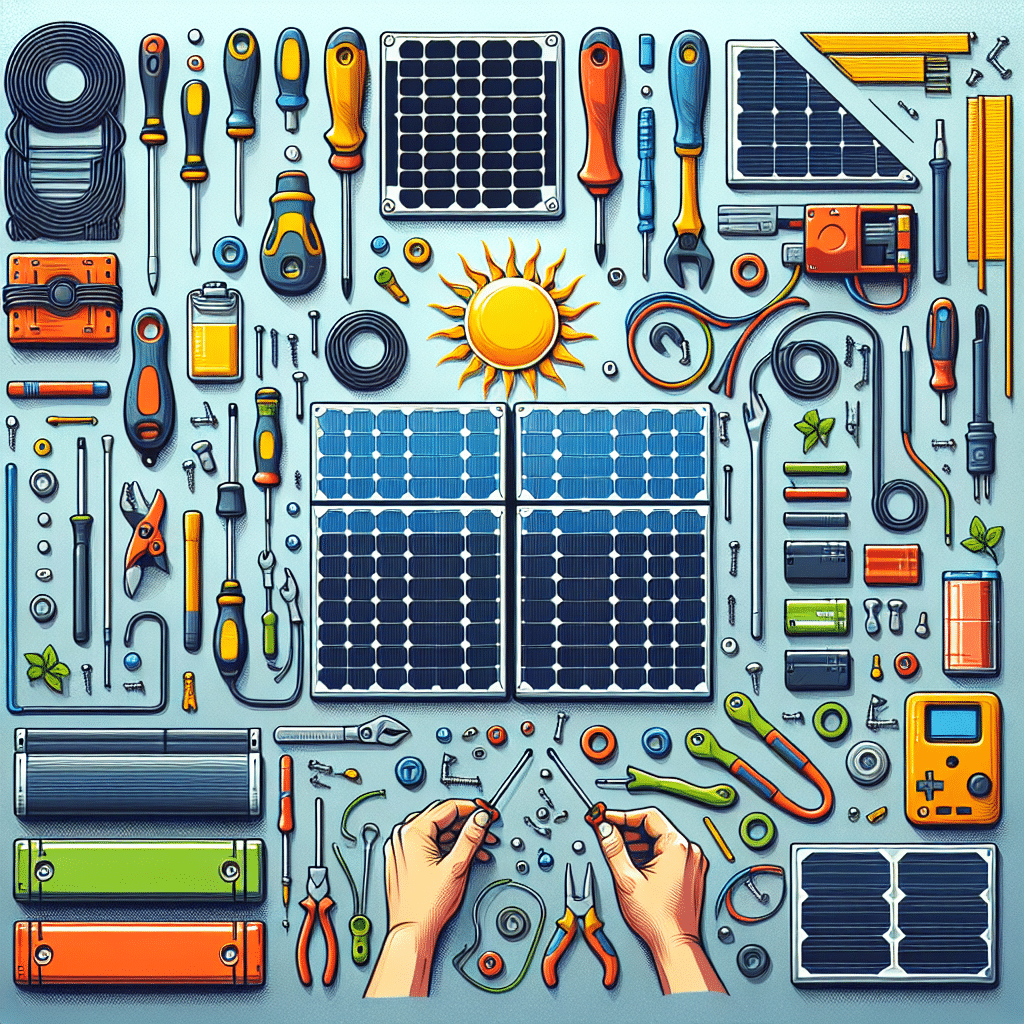Understanding Solar Battery Packs
Solar battery packs are an innovative solution for storing energy generated from solar panels, allowing excess power to be used later. Whether for home use, camping, or emergency power, creating your own DIY solar battery pack can be economical and rewarding.
Essential Components
To build your own solar battery pack, it’s crucial to understand the core components involved:
-
Solar Panels: The primary source of energy, solar panels convert sunlight into electricity. Choose panels based on your energy needs and space availability. Common sizes include 100W, 200W, and 300W.
-
Batteries: The heart of your solar pack, batteries store the excess energy generated. Lithium-ion batteries are popular due to their longevity and efficiency, though lead-acid batteries might be a more affordable option for beginners.
-
Charge Controller: This device regulates the flow of electricity from the solar panels to the batteries. It protects the batteries from overcharging and deep discharging, extending their lifecycle.
-
Inverter: If you want to power standard household appliances, an inverter converts the stored DC electricity from the battery into AC electricity. Choose a pure sine wave inverter for sensitive electronics.
-
Wiring and Connectors: Proper wiring is essential for safe and effective energy transfer. Use appropriate gauge wiring, connectors, and fuses to protect your system.
-
Mounting Equipment: Strong brackets or mounts are needed to securely install your solar panels on various surfaces.
Step-by-Step Guide to Building Your DIY Solar Battery Pack
Step 1: Assess Your Power Requirements
Before starting, calculate the total wattage of devices you wish to power. This will influence the number of solar panels and batteries needed. For example, a 200W load running for 5 hours requires 1000 watt-hours.
Step 2: Gather Your Materials
Acquire all necessary components and tools:
- Solar panels
- Batteries
- Charge controller
- Inverter
- Wire (solar-rated if possible)
- Connectors, fuses, and a multimeter
- Tools: drill, screwdriver, wire stripper, and wrench
Step 3: Selecting and Arranging Solar Panels
Choose a sunny location for your panels, ensuring minimal shade exposure. Arrange the panels in a way that maximizes sunlight absorption. Fixed mounting is common, but adjustable mounts allow for seasonal angle changes.
Step 4: Wiring the Solar Panels
Connect your solar panels in series or parallel, depending on your charge controller specifications. Typically, you want higher voltage to reduce current loss in wires, so series connections (higher voltage) are common. Use appropriate connectors to securely attach the panels.
Step 5: Connecting the Charge Controller
Wire your charge controller according to the manufacturer’s instructions, connecting the solar panel input and battery output. Ensure you follow polarity carefully; wrong connections can damage components.
Step 6: Connecting Batteries
Connect your batteries in parallel or series according to your desired voltage output. If using lead-acid batteries, ensure that all batteries are of the same type and capacity. Use fuses for added safety, connecting them near the battery terminals.
Step 7: Installing the Inverter
Connect the inverter to the battery pack following the guidelines provided in the inverter’s manual. Ensure it’s easily accessible for maintenance and check that it’s rated to handle your load requirements.
Step 8: System Testing
Before fully using your DIY solar battery pack, test the system. Check all connections for tightness and verify the correct operation of the charge controller, batteries, and inverter using a multimeter. Monitor battery voltage levels, ensuring they are within the acceptable range.
Maintenance Tips for Longevity
-
Regular Inspections: Periodically check connections, wiring, and components for any signs of wear or damage. Replace any faulty parts promptly.
-
Battery Care: If using lead-acid batteries, routinely check the water levels and top off as needed. Lithium batteries require less maintenance but should still be monitored for performance.
-
Cleaning Solar Panels: Dust and debris on panels can reduce efficiency. Clean them occasionally to maintain maximum sunlight absorption.
-
Software Monitoring: Some charge controllers offer monitoring options with apps that track energy generation and battery health.
Safety Precautions
-
Proper Wiring: Overheating and fires can result from poor wiring practices. Ensure all connections are protected and use the correct gauge wire.
-
Avoid Overloading: Make sure to size your system correctly. Overloading can damage batteries and inverters.
-
Weather Considerations: If installed outdoors, ensure your equipment is rated for weather exposure, and secure wiring to prevent damage from wind or rain.
-
Emergency Off Switching: Implement features that allow you to quickly disconnect components in emergencies.
FAQs About DIY Solar Battery Packs
-
What type of batteries are best?
- For most DIY projects, lithium-ion is preferred due to their efficiency and lifespan. Lead-acid is suitable for budget-friendly options.
-
How much sunlight is needed?
- Panels need direct sunlight for optimal performance. Even partial sun can generate power, but aim for a location with minimal shading.
-
Can I add more batteries later?
- Yes, as long as they match the existing battery type and voltage configuration.
-
How long will it take to build?
- Depending on skill level, gathering materials and assembling the system can take anywhere from a weekend to several weeks.
-
Is it cost-effective?
- Long-term savings on energy costs and independence from the grid make DIY solar battery packs a worthwhile investment.
By understanding these fundamentals of building your own DIY solar battery pack, you can harness renewable energy effectively, saving money and contributing to a sustainable future.
